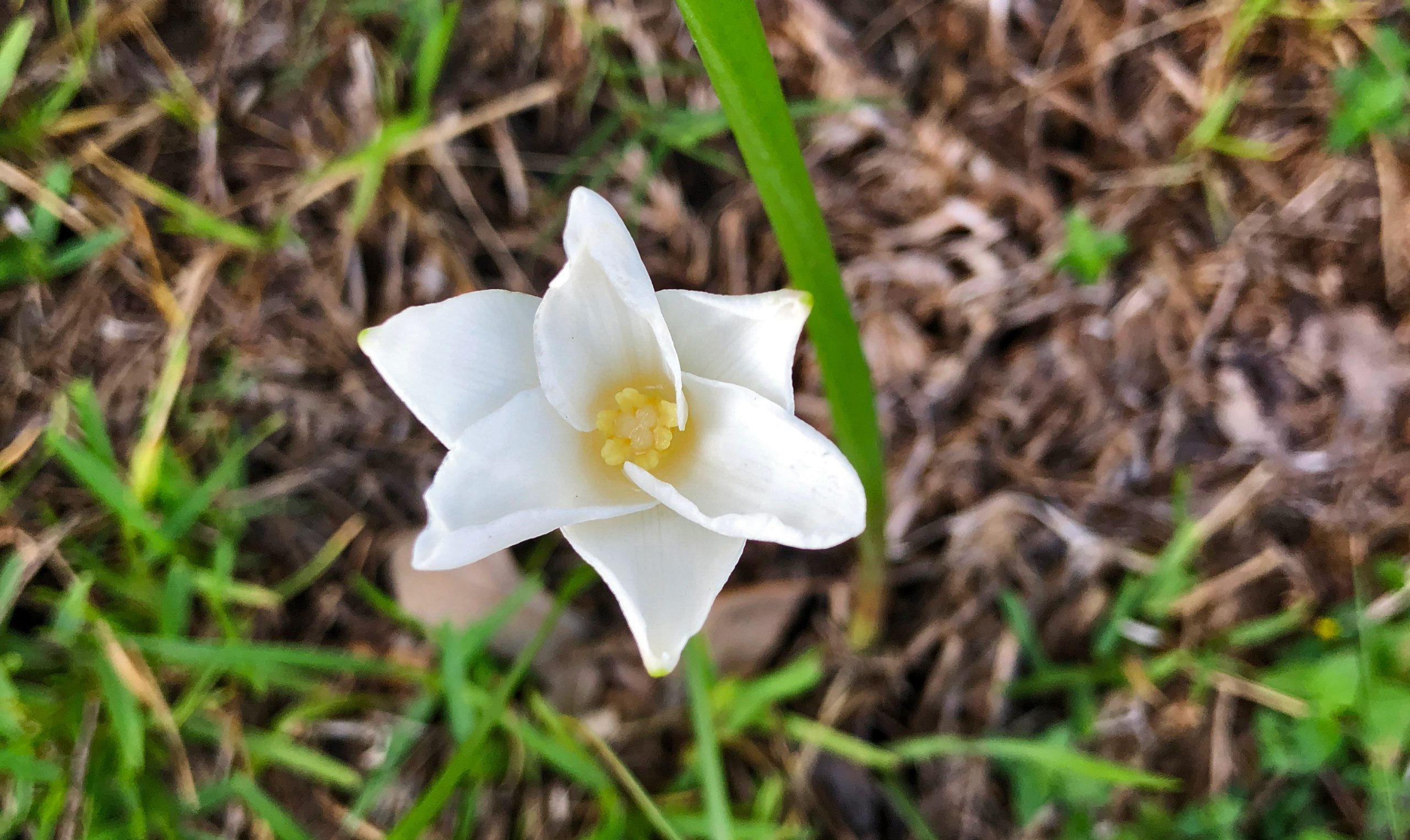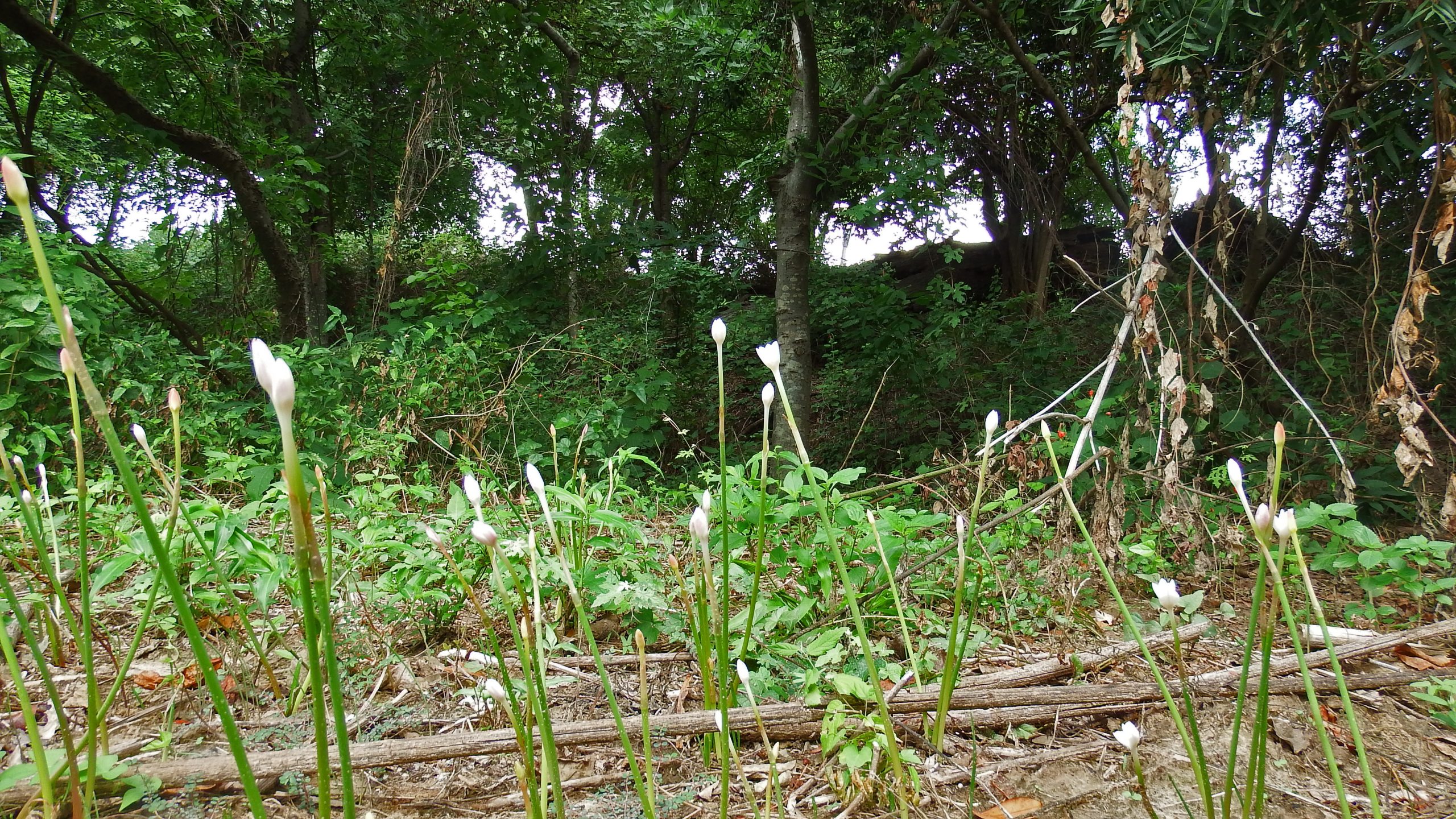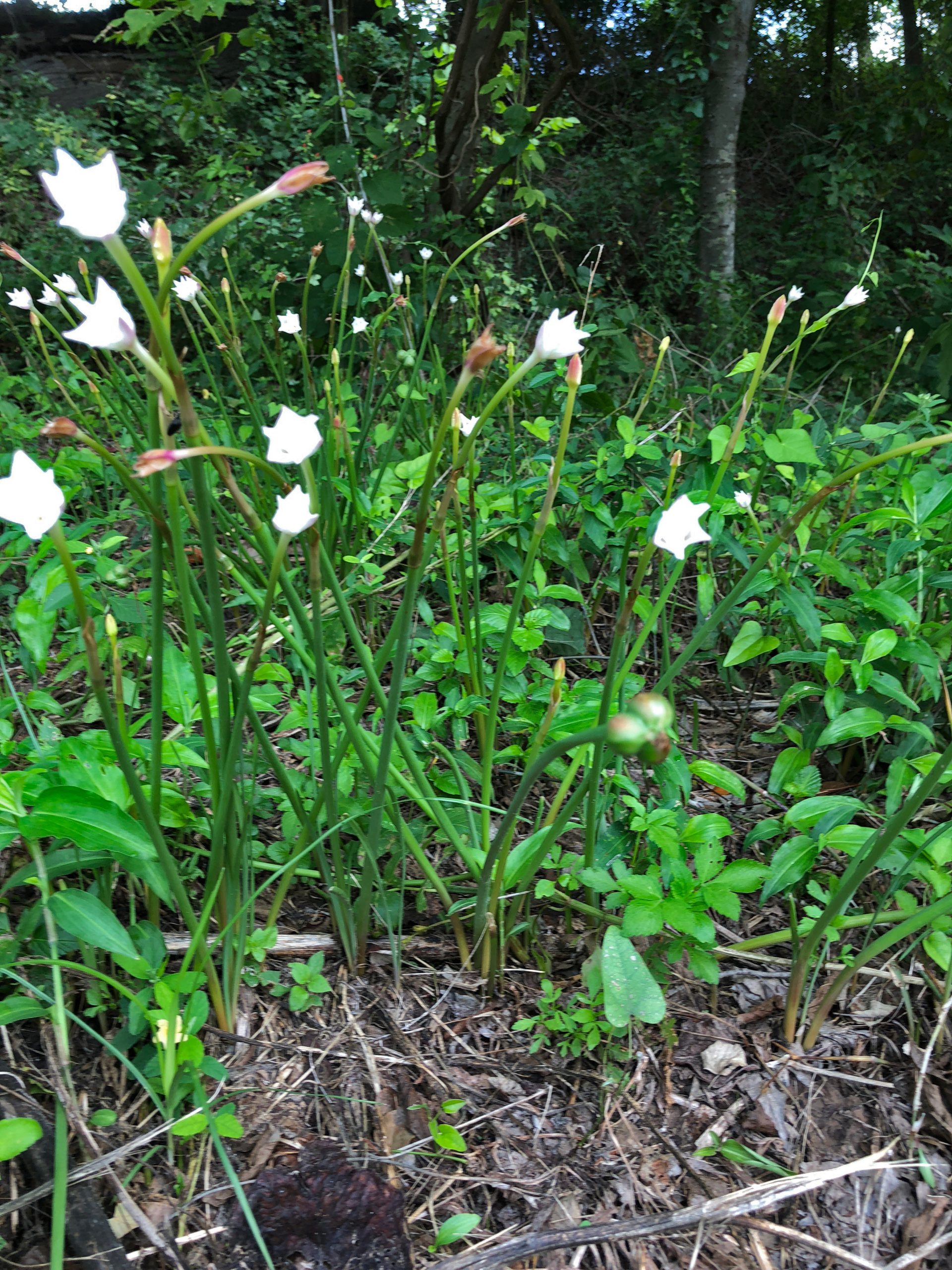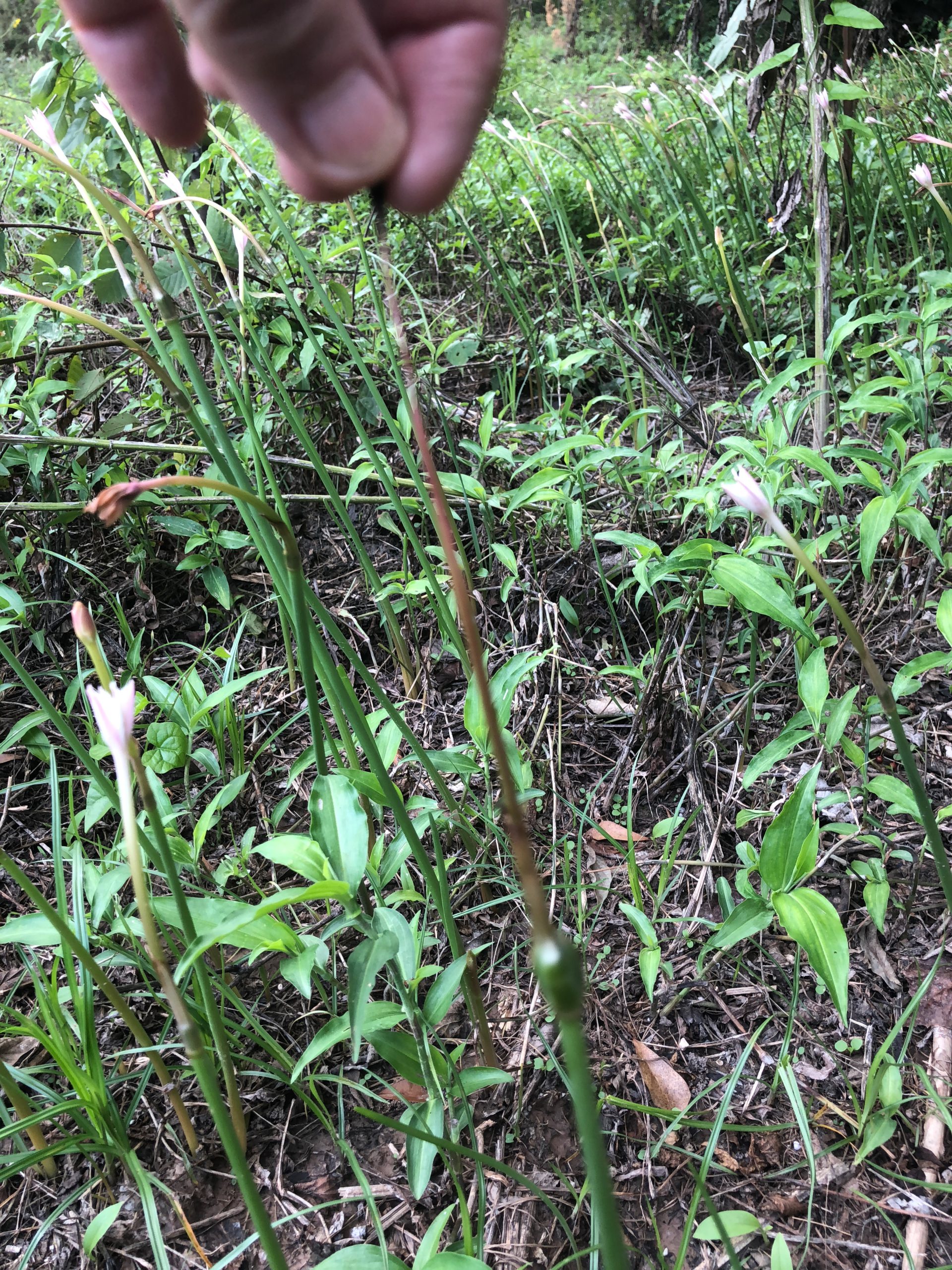Secret Garden

I found a secret garden within shouting distance of the Jackson Hill footbridge. I would tell you exactly where except it’s gone now. I stumbled on it poking around off of the paths. That’s where the bugs, birds, lizards, snakes, and naturalists like to hang out.
I crested a tiny hill and found scores of white flowers waving on foot-tall stalks. Many coming out of bare earth.

It was surreal. I had seen one of these flowers one other time. I posted it on iNaturalist and got no response (making it a fascinating mystery). And now I was presented with a riotous abundance.
I had been puzzling over that unidentified flower for almost a year. It looked like a rain lily. Just really big. I’m used to seeing rain lilies a few inches tall. They are cute little flowers that pop up right after a rain. They grow from a bulb and don’t do anything until they get very wet. Then they go into overdrive, produce a single flower and disappear. The Tribbles of the plant world, except less dangerous. (Google it if you’re too young.)
Now, I was faced not with a single bloom but an abundance of blooms nearly a foot tall with big, velvety flowers. I took more photos and posted them on iNaturalist and someone agreed with me that this was as some kind of rain lily, but which one? There are bunches.

Some of these rain lilies are partially open and some are still in bud stage. If you look in the right third near the top of the bottom half you can see a seed capsule.
It took longer than I want to admit to work out exactly which rain lily I had found. Rain lilies are strangely complicated taxonomically, and seem to have been moved from family to family recently. The clue that let me identify this as Zephyranthes drummondii, native to Texas and the southern tier of the US., was the strangely large space between the top of the flower and the seed capsule.

I am holding the tip of the wilted flower in my fingers. The swelling down the stalk is the ovary that will eventually turn into the seed capsule. In the lower left of the photo, you can see a flower that has not yet fully bloomed. You can see how long the flower tube is because the color changes at the ovary.
What follows will not be immediately interesting, but bear with me because it gets there.
A grain of pollen is a single cell that contains the male half of a plant’s reproductive material. The female half is contained inside the ovary. As with mammals, the male half has to traverse the distance between itself and the female half. With us, they swim, but seed-bearing plants don’t have swimming sperm. I just learned that at a lecture I attended. Ferns and more primitive plants have sperm that can swim. Later plants have sperm that cannot swim.
I didn’t give this a lot of thought during that lecture because most plants set seeds right inside the flower. But faced with a distance of what looked like five inches, I wanted to know how the non-swimming plant sperm made the journey. The answer is the pollen tube.
A single pollen cell, when it lands on the sticky stigma (female part), starts to grow a projection, the pollen tube. Chemical signals within the plant either promote the growth of this pollen tube or they can inhibit the growth. If pollen from a different plant lands on the stigma, it doesn’t get the signals it needs to start growing the tube.
The pollen tube, guided by the plant, grows long enough, and in the right direction, to deliver the reproductive bits right to the waiting ovary. In this case, that would be five inches. It is a single cell. A single cell that is five inches long. I don’t know what blew me away more, that I found a secret grove of flowers or that those flowers contain five inch long cells!
And being rain lilies, they are all gone now. But, being rain lilies, they will be back.

